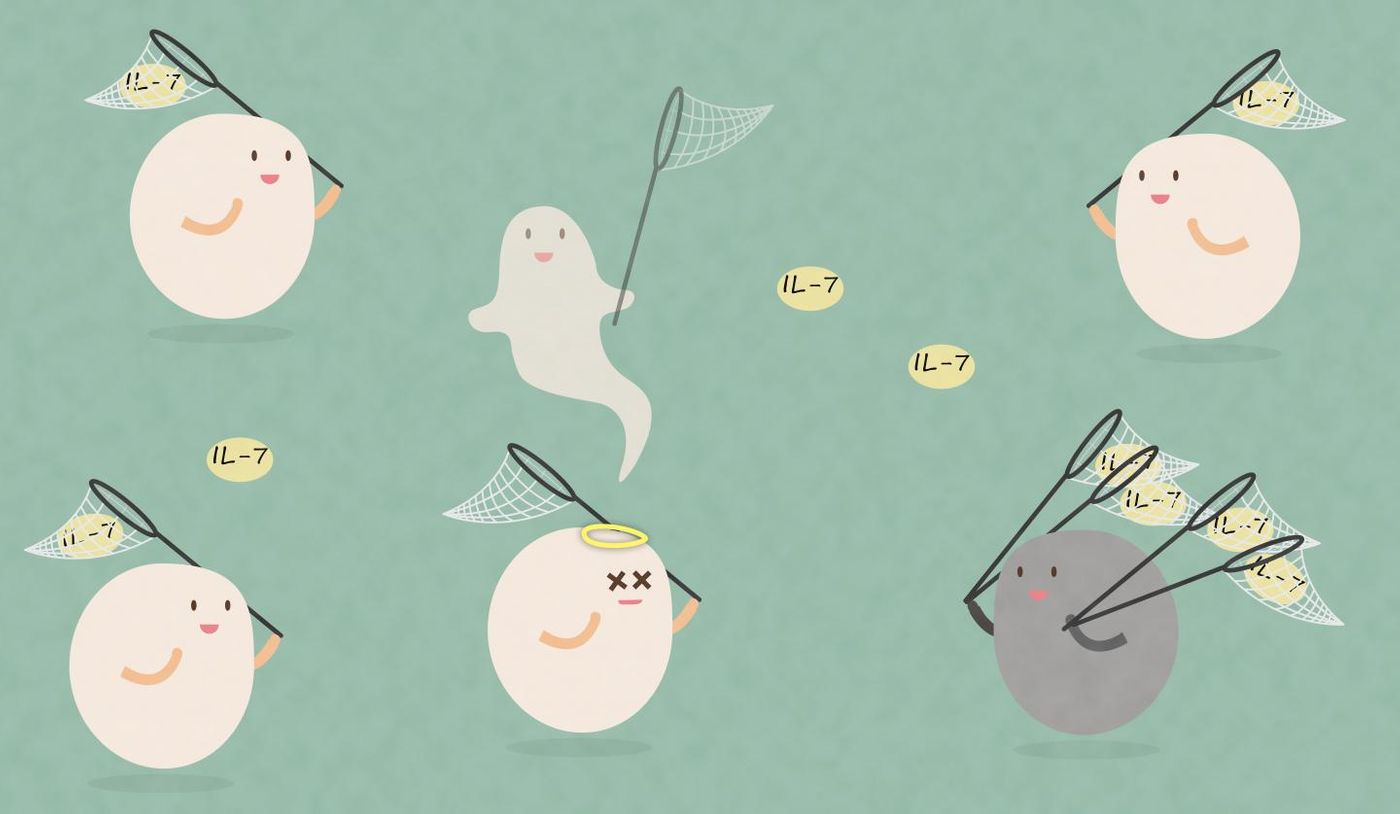Immune Cells Compete Against Each Other for Survival
A study that was initially designed to simply study T cell homeostasis ended up yielding surprising results. A recently discovered cell type, innate lymphoid cells (ILCs), appeared to be better at securing proteins both ILCs and T cells need to survive. This finding is perplexing because while T cells are plentiful in the body, ILCs are extremely rare.
The study was a collaboration between the Institute for Basic Science, La Jolla Institute for Allergy and Immunology, and The Scripps Research Institute. Researchers are interested in understanding more about immune cell homeostasis, especially T cells and B cells, due to their vital role in vaccine effectiveness and in keeping the human body health even as it ages.
T cells need to bind a protein called interleukin-7 (IL-7) to survive, and they have an IL-7 receptor on their cell surface just for this purpose. In the past, scientists had trouble studying T cell homeostasis because it is difficult to measure levels of IL-7 in the lab. But in the current study, scientists found a way around this roadblock to study how the body regulates IL-7 production.
Starting with mice lacking any IL-7 receptors, researchers saw IL-7 proteins begin to accumulate in the mice models, since they had nothing to bind. Then, they reintroduced cells with IL-7 receptors and watched how the mice immune systems reacted. This is where they saw that T cells were not the only cell binding IL-7; ILCs were also binding IL-7 and binding it more effectively.
"To be honest, I was quite surprised that ILCs have such an effect in this model," said lead author, Christopher Martin. "Relative to T cells, there are very few ILCs in the tissues we study. So, when we were designing the initial experiments, we weren't optimistic that we would find anything interesting."
Now with ILCs in the picture, we have to wonder: Why isn’t there enough IL-7 for both these cells? Why do they need to compete? While these questions have yet to be answered, the study scientists do know why ILCs are better at binding IL-7. While T cells decrease the number of IL-7 receptors as they start to bind IL-7, ILC’s don’t, and they can continue binding IL-7 at a rate faster than T cells.
Creating healthy levels of both T cells and ILCs is important for fighting pathogens, making vaccines work, and preparing for good health in old age, when natural production of immune cells slowly diminishes. If scientists can understand why these two cell types have to compete for survival, perhaps they can find a way for both to flourish in harmony.
The present study was published in the journal Immunity.
Source: Institute for Basic Science









